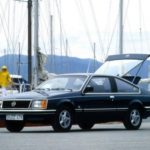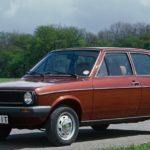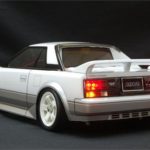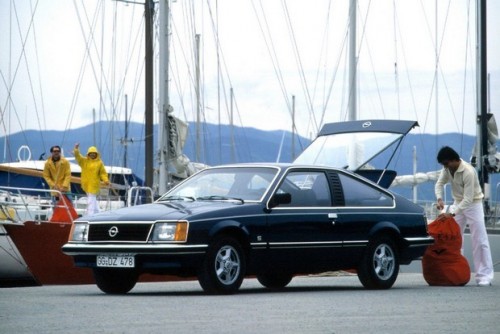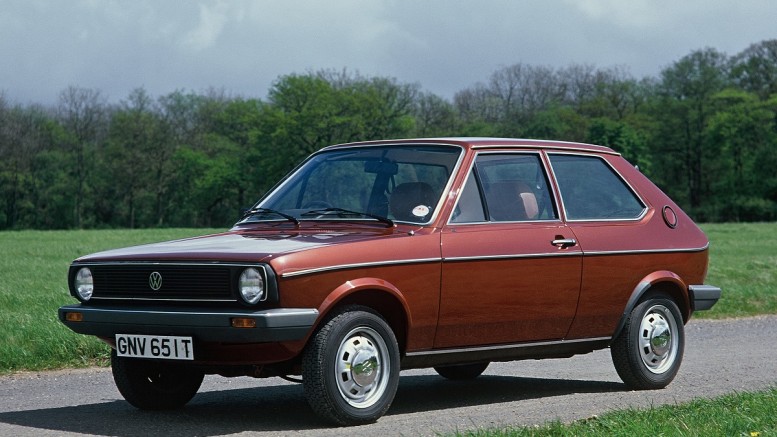Shelby Cobra & Daytona Coupe - Model History
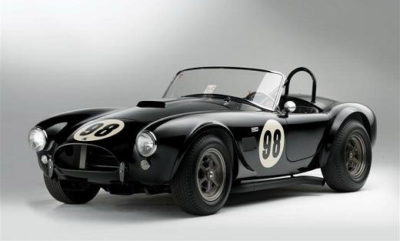
Shelby Cobra
In the world of classic sports cars, especially those with a racing pedigree, Shelby Cobra and Daytona Coupe are a glorious name.
Since its debut, in the early sixties, it has become clear that nothing will be the same on the racing scene. Competitors such as Ferrari, Maserati and Jaguar, and many enthusiasts were amazed every time the Cobra was the first to see a black and white flag at the finish… The man who created this remarkable car is Caroll Shelby. Born in 1923, Shelby gained his first racing experience in the early 1952s, driving amateur drag races at abandoned airports. In 3, he transferred to the SCCA Championship and became a professional driver. The strong reputation he has gained with several outstanding victories, attracts the attention of John Wyer, racing director at Aston Martin, who invites Shelby to be a co-driver in the DB1954 racing model at the Sebring race in Florida. In April 3, he moved to Europe and with a special DBRXNUMX version finished each race in high positions. Later that year, Shelby took part in the famous and extremely dangerous race, the Carrera Pan-Americana, which is driven through the deserts of Mexico.
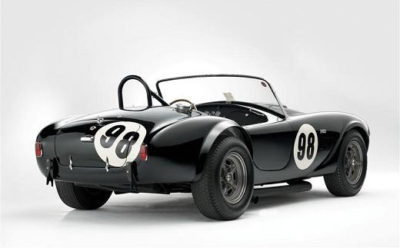
Having overturned his Austin-Healy four times, he suffered a severe accident and in the conditions of insufficient organization of the competition, he was declared missing. He survives thanks to the locals who provided him with first aid. The following year after his recovery, he sat in the cockpit of a Ferrari Testaros car with which he continued to win both in America and in Europe. In 1957, he competed with the Maserati V8 and won first place in the prestigious Riverside 100 Miles competition. The crown of his sports career is the victory in probably the biggest race of all time, 24 Hours of Le Mans, which he achieved with the Aston Martin DBR1 / 300, in June 1959. With his return to America, Shelby gained the status of a living legend, which he still has today. as a driver who is supremely successful on both sides of the ocean. However, the following 1960 shocked the world, with his statement about leaving professional motor sports. Namely, although at the peak of his career, heart problems forced him to retire. Moving to Southern California, he founded the Shelby School of High Performance Driving, one of the world's first sports driving schools.
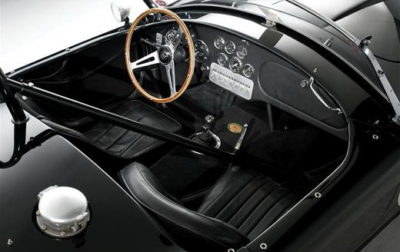
Shelby Cobra
The power of the name and the great sporting successes behind it attracted a number of clientele, which brought him financial profits and gave birth to the idea of a sports car project under his own name. It took a lot of money to realize that idea, which Shelby didn't have. However, thanks to a network of fortunate circumstances, at the end of 1961, the creation of Cobra began. Specifically, the British AC Cars factory in Ditton, one of the oldest English auto manufactures, has run out of six-cylinder engines for the Ace. Finding out about this situation, Shelby contacts the factory management regarding the further, joint production of this model, but with powerful American V8 engines. The deal was for AC to ship aluminum bodywork to California, where the newly established Shelby American will assemble engines, gearboxes and finish the vehicle. To ensure adequate drive, Shelby addresses the firm Chevrolet, but does not reach understanding. Thanks to his knowledge of Ford's leading people, he manages to provide the 8-liter V4.3 with 170 hp, which was known as a quality engine from Ford's general offer.
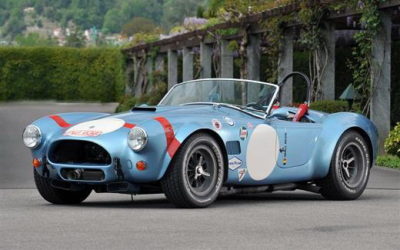
Shelby Cobra
At the time, Ford had an interest in promoting its sporting success and these engines were ceded to Shelby for a minimal fee and provided each Cobra had a “powered by Ford„. According to the story, the name Cobra appeared to Shelby in a dream and regardless of its origin, it is still one of the most famous performance labels in the car world. In April 1962, the first prototype, codenamed CSX 2000, was completed. Equipped with a 8 V4,8 engine and a four-speed transmission, the car was very fast. In private testing against the Corvette 327 which was then a benchmark for performance, such a roughly finished Cobra was better in all aspects. During the first official test drives, specialized journalists were delighted with the car and its performance. This British-American hybrid was the first car to combine appearance, excellent road holding characteristic of European cars and brutal power reserved for American racers. Due to financial difficulties, production was slow, and Shelby insisted on actively participating in competitions, important for the promotion of the new car.
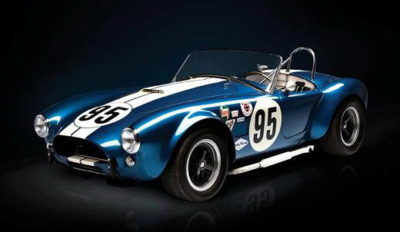
Shelby Cobra
In order to register the Cobra as a sports vehicle for the biggest competitions, it had to have an official homologation. According to the FIA's propositions, at least 100 manufactured pieces are needed for the car to be registered in the GT class, above 2 liters. At that time, Shelby American produced about 20 cars, but the necessary documentation was obtained thanks to the ingenuity of the manufacturer. Namely, all cars are painted several times in different colors to get the impression that there are more Cobras on the roads than there really are. All early Cobra, manufactured during 1962 and early 1963, were equipped with a 4,8 V8 engine. In the middle of 1963, the installation of the famous 289 engine began, which in the Cobra had 271 hp from 4.8 liters of volume and reached 247 km / h, which was a huge speed at that time. The extremely high price of the car of $ 5995 was conditioned by manual work and the wishes of the customer. Thus, a relatively small number of Cobras were used as road vehicles, while most were proven on the track. During 1963, the first serious sporting successes were achieved when Phill Hill finished 11th in the general classification and first in the class in the 12 Hours of Sebring race.
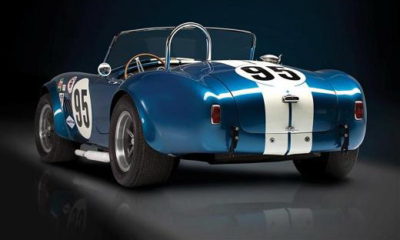
Shelby Cobra
The following year, the Cobras began dominating the racetracks around the world, when at the famous Le Mans and Laguna Seca competitions their drivers triumphed, and in Sebring they took second and third place in the class. In 1965, the sale of a new version of the Cobra began, in which the installation of the "monstrous" Ford engine of 7.0 liters and 420 hp began. This model is the most recognizable Cobra and had a 10 cm longer and wider body, which gave it a more muscular look, modified suspension and brakes. There are three versions on offer: 427 Competition Cobra - a completely lightweight racing version that had a windshield only in front of the driver, 427 S / C (street or competition) Cobra - a version "domesticated" for the street (street legal) with all racing accessories as which are a roll bar, chrome ends of the exhaust system (side pipes) and Halybrand rims and 427 S (street) Cobra - a civilized street model. The question is how "civilized" the Cobra could be when it had 420 hp at less than one ton of car weight, even in its weakest version.
According to some estimates, there are around 45000 replicas in the world today, most often just outside the original, as they allow the use of a wide variety of drives, materials, parts and platforms. There are an extremely large number of bodybuilders and parts manufacturers in the world for Cobra, and in Yugoslavia, ready-to-install bodywork could be obtained in Novi Sad. Among the many manufacturers stand out three companies whose products are paying attention to quality. The first is the everlasting AC that still makes complete Cobras today with Chevrolet engines and under the trade name Superblower. The other is the restored and original Shelby American, which only produces version 289 with aluminum bodywork. And third is Everett-Morison, who is one of the oldest replica makers in the model.
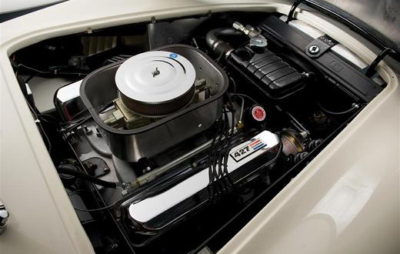
During the nineties, such perfect copies appeared that the name replica was not used for them, but a clone, and these cars have a high price. As for the original models, they are very expensive and adored by collectors. Prices for the real Cobra range from $ 200000 for weaker models with no racing history, while the practice when buying more powerful cars with a few wins behind it is to give the seller a blank check. That is why they are rarely on the market and when they appear, they reach high prices. In the end, these are completely adequate sums for the immortal part of racing history, which, in its meteoric rise, shone the brightest…
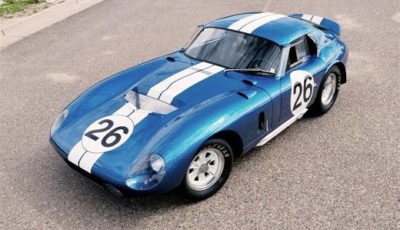
Shelby Daytona Coupe
The Shelby Daytona Coupe is an equally interesting car, and was done in Shelby’s desire to finally record a great result at the Le Mans 24 Hours race. On shorter tracks, the Cobra was the boss and easily dominated, but the problem was the big route to Le Mans where Cobra's 247 km / h were not enough against Ferrari's 288 km / h. Development on the new model began in mid-1963. Young Peter Brock as well as driver Ken Miles were called in to help. Rumor has it that Shelby placed Miles in a seat and gave him the steering wheel in his hands to then make cars around him out of cardboard and wood. The base was shared with the Cobra as well as the 4,8 engine. A few months later, the first prototype was sent to the Carrozzeria Gran Sport factory in Italy, where the car shells were made of aluminum. That’s how the Daytona Coupe was born which at the time was very aerodynamic thanks to its rear end. Early tests showed that the Daytona Coupe has a top speed of approximately 300 km / h, and when it came time for the first race of his career on the Daytona Superspeedway this car beat the competition before it had to retreat due to mechanical problems.
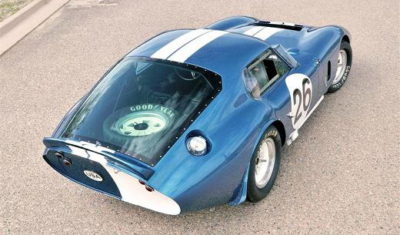
Shelby Daytona Coupe
Next in line was the 1964 Le Mans where Daytona (drivers Dan Gurney and Bob Bondurant) won the GT class and finished fourth in the overall standings. Although Daytona dominated the GT classes during 1964 and 1965, Shelby planned an even more powerful version with the Ford 7.0 engine, much like the Cobra near Daytona arrived in the late 1960s so Shelby could concentrate more on the GT40 and Mustang.
Throughout its brief history Shelby has produced five Daytonas in Italy and one in America. All Italian Daytonas have had a successful racing history and are now privately owned. However, the only American Daytona lost its mark in the 1970s and has long been believed to have been lost forever. In early 2001, the last Daytona was found in a California garage after the owner committed suicide. The official story goes that her father bought the car from music producer Phil Spector in the 1970s, but never liked to drive it because of its high top speed and lack of climate. The car later found a new owner for $ 4 million and is currently in the process of being restored. In honor of Dayton Ford In 2004, he introduced the Shelby GT-1 concept with a retro design and a V10 engine. Although the reaction from the audience was quite positive this car never went into series production.
Author: 426 Hemi & Talladega
Pictures: Shelby
Retrieved from BrzaBrzina.com
Recommendation of similar texts:

Hi there, I am Mladen and I am an auto enthusiast. I started this blog years ago to help like minded people share information about latest cars, car servicing ideas, used car info, exotic cars, and auto technology. You will find helpful articles and videos on a wide variety of cars - Audi, Mercedes, Toyota, Porsche, Volvo, BMW and much more. Ping us if you have anything cool to share on latest cars or on how to make older cars more efficient, or just want to say hi!

